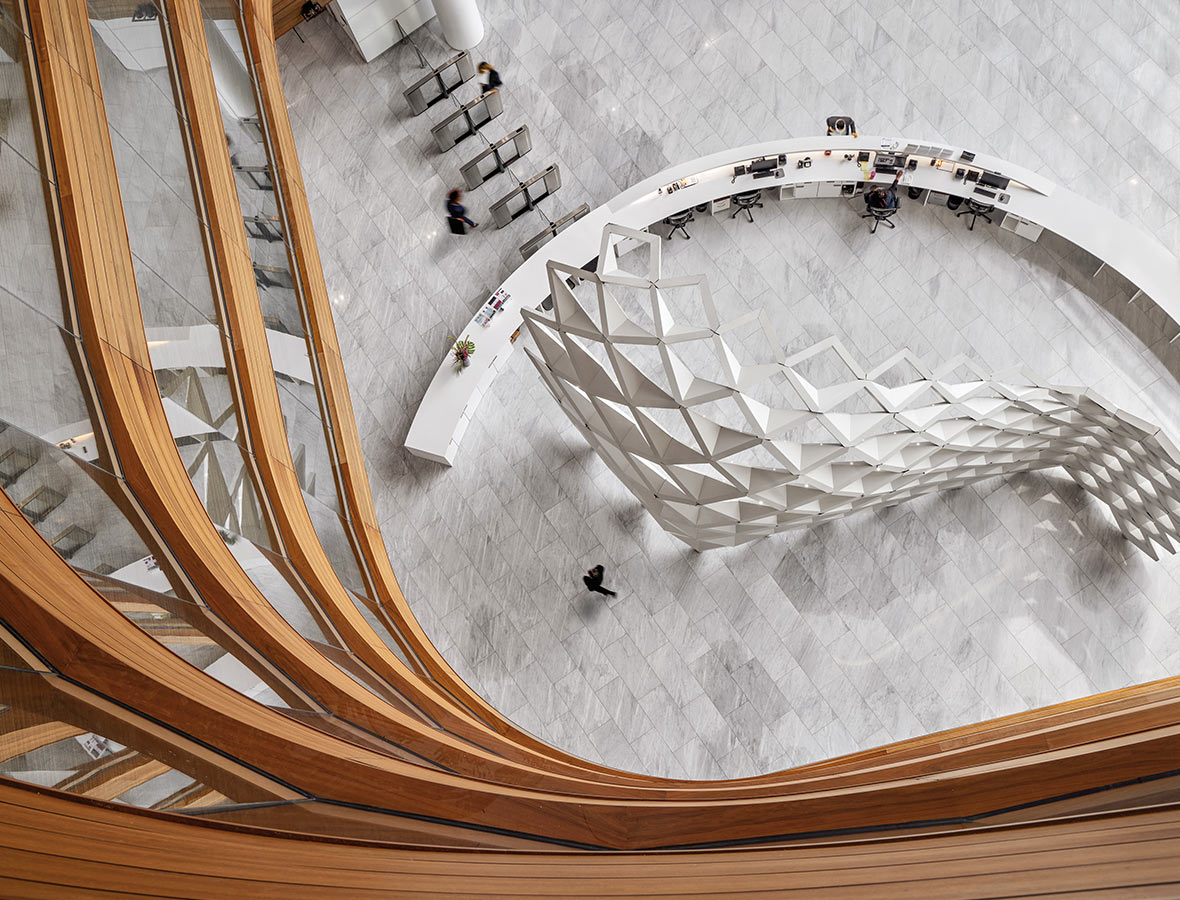Trends to Watch: Shaping the Future of Higher Education
December 07, 2023
Editor’s Note: This blog is part of our Design Forecast blog series, looking at what’s next in 2024 and beyond. Here, we sit down with Deborah Shepley and Mark Thaler, global leaders of Gensler’s Education practice, to discuss what’s next for the future of higher education.
How are higher education institutions rethinking the role of the physical campus?
Mark Thaler: Higher education is facing significant challenges that are forcing institutions to reexamine their operations and role. Declining enrollment, rising costs, and questions about the value of a traditional degree have created uncertainty around the future.
In response, many colleges and universities are looking for ways to right-size their physical infrastructure and focus on the highest and best use of existing assets. They’re looking at ways to reimagine buildings, as opposed to knocking them down; building less and doing more with what they have. There is also more emphasis on data-driven decision making to optimize campus utilization and efficiency.
As people are questioning the role of the physical campus, and how to use it best, the main thing that our clients are asking is: What do we do with all of our physical assets? Which ties back to the highest and best use. As students are challenging the value proposition within higher education, campuses are looking at how to respond to stay relevant and financially viable.

Deborah Shepley: We are partnering with higher education institutions on several integrated planning projects. Aligning multiple planning efforts and using qualitative and quantitative data to inform decisions is leading to a shift from thinking about ‘more,’ to thinking about ‘different’ and sometimes ‘less.’ For example, we did a study to convert an old classroom building into a dorm to address a growing need for affordable student housing. Many institutions are still very concerned about the perception that something sustainable is more expensive. So, we’re having conversations that focus on long-term operating costs, and total cost of ownership (TCO).
The focus on belonging and creating a place for everyone on campus is another very important trend. Students with a strong sense of belonging tend to be the most successful in their academic journeys. One of Gensler’s key pieces of IP is our Education Engagement Index, and there are some strong findings around belonging, relationships, motivation, engagement, and learning outcomes. So, linking those things is critically important.
We’re tapping into the idea of inclusive and diverse environments, and how it ties back to resilience and sustainability. For example, we just completed a sustainability plan at Cal State Northridge that had a broad and inclusive process, with widespread campus engagement and support for the institution’s thinking and goals around sustainability.
As students seek alternative learning pathways, how is workforce development changing the role of higher education?
Mark: Another big issue that’s an adjunct to higher education is workforce development, and finding pathways for students to gain skills and develop a meaningful path to employment that doesn’t necessarily require a four- or six-year degree. For example, we’ve designed projects like the Plumbers Local 130 UA Training Center in Chicago. As students are looking for high payback on their investment, they’re looking for training for those kinds of jobs. As they’re vying for or thinking about what the value of higher education is versus a workforce training program, those programs are becoming more prevalent.
Just as the work sector is examining the future of work, we are bringing that thinking to our education clients. With the rise of multidisciplinary programs and degrees, the idea that there’s a one-size-fits all program curriculum is outdated. Students are demanding more lateral thinking, bringing all sorts of disciplines into their degrees, and almost self-directing based on their interests.
How is the academic or faculty workplace shifting on campus?
Deborah: We are partnering with our clients to rethink the academic workplace and to leverage our workplace experience with many different client types. We’re asking questions like: How many days a week and for how many hours do you need to be on campus to be effective in your position? Would you be willing to share a workspace?
The amount of space allocated to office is the most underutilized on a campus. But we’re looking at how to leverage it because faculty needs to be there to help students. But if they want quiet focus time, that doesn’t have to happen there, it could be elsewhere.
What trends are you seeing around hybrid learning?
Mark: Hybrid learning is here to stay, and there are at least three or four different flavors of hybrid. There’s HyFlex, where you have some students in class and some remote, and it’s all happening at the same time. There’s schedule-based hybrid, where depending on the day of the week, you’re hybrid, remote, or in person. There’s activity-based hybrid, where depending on what you’re doing, you might have a lecture remotely, and then a lab in person. And then there’s the blends of all of those. And the key is to find the right technology for each of those applications.
Students have preferences for the kinds of learning they want, but hybrid programs are not always as successful. So, it’s both providing the right physical space and virtual space, but also everything that goes along with it to make it work.
What trends are you seeing in student housing?
Deborah: We’re seeing more opportunities across colleges and universities for student housing, with a focus on affordable housing and providing living communities with expanded wraparound services. Many state institutions, particularly community colleges, have expanded their beyond providing education, and helping support students’ basic needs, from housing to mental health. The campus is really becoming the place to support the ‘whole student.’
And housing is also connected back to belonging, so it’s essential to create a place where students feel a sense of belonging, particularly for first year students. The first-year experience is incredibly formative to and indicative of a student’s success later in their college experience and is critical to relationship building.
Why is holistic planning integral to the future of higher education, and what services are you offering to address the full spectrum of campus needs?
Deborah: We have been expanding our services to help institutions approach planning holistically with an integrated planning approach. Aligning planning efforts across a campus builds relationships and positions institutions to be prepared for change. For example, looking at sustainability, belonging, wellness, and how they intersect on the physical campus maximizes opportunities to have a positive impact.
Mark: Because of the mixed-use nature of campuses, a cross-disciplinary approach can bring together multiple areas, for example sciences, health and wellness, sports, workplace, sustainability, brand, and residential design. Our ability to bring experts and thought leaders from across these very specific disciplines is a valued by our clients and supports holistic planning.
For media inquiries, email .
